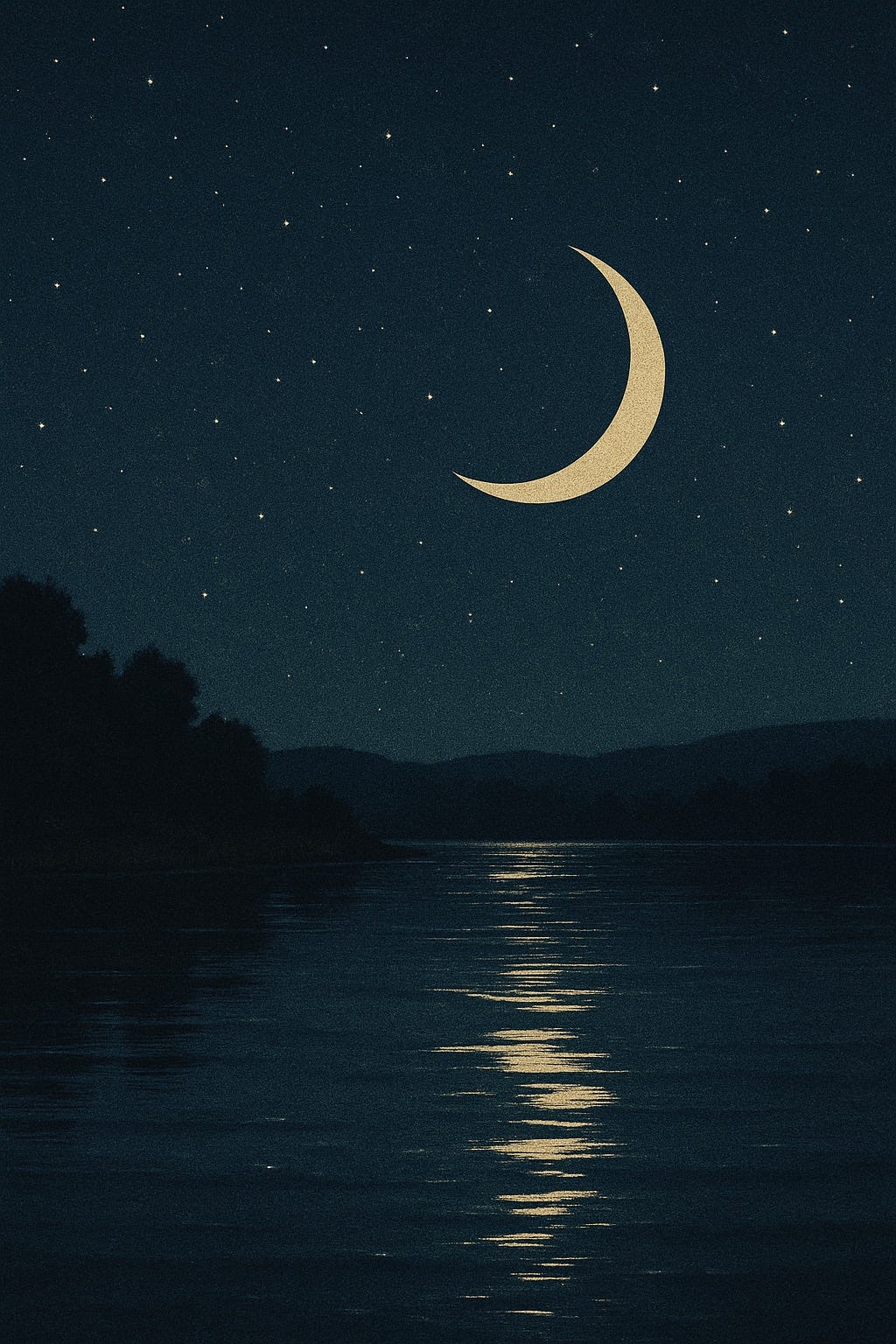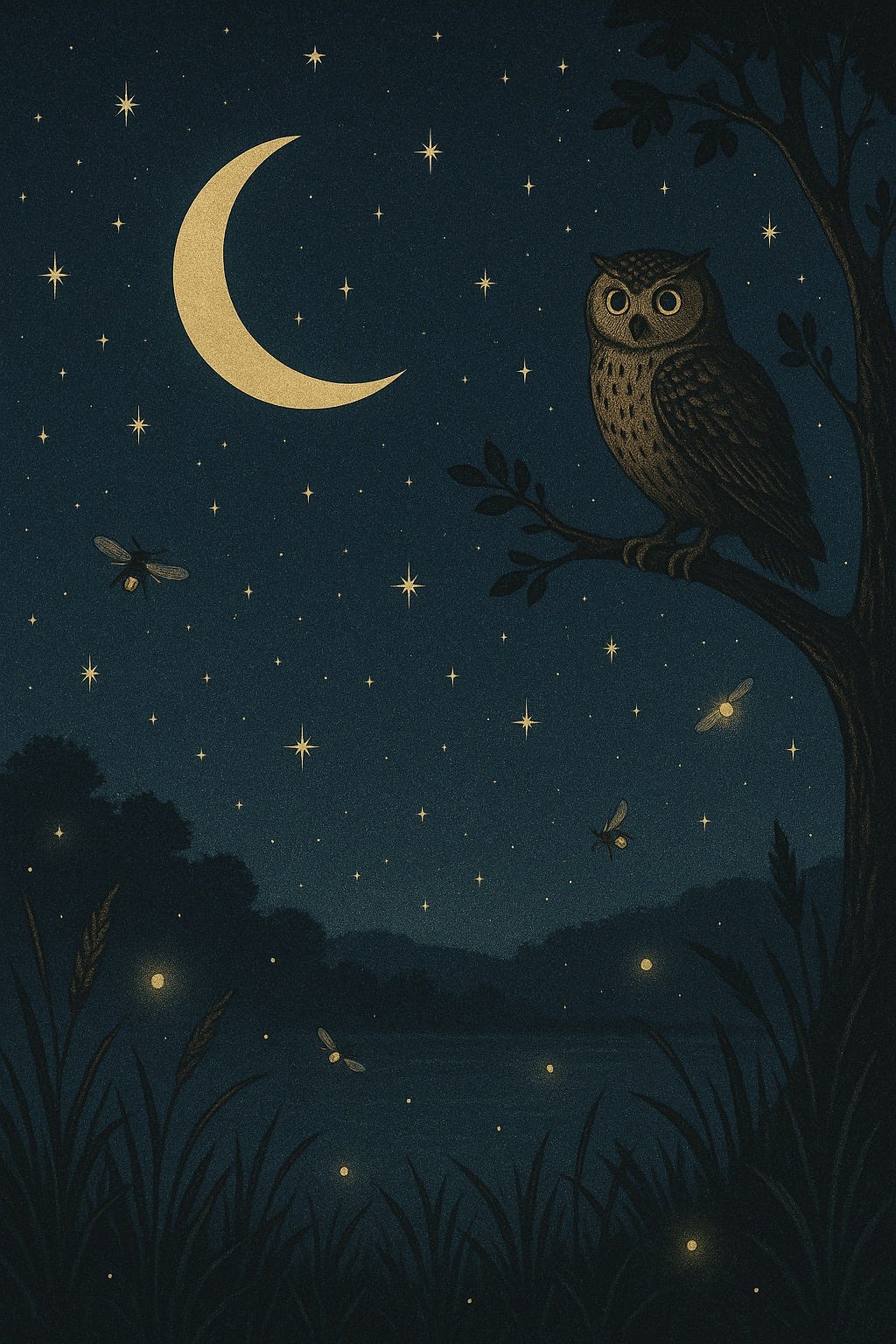Is It Darkness We Fear—Or What It Reveals?
When I was little, I was afraid of the dark. I needed a night light, or the door cracked open just enough to let the hallway glow spill in. Sometimes I’d fall asleep in the safety of someone else’s presence, because being alone in the dark felt too overwhelming. And honestly? That fear stayed with me longer than I realized. Because it wasn’t just about the absence of light. It was about what the darkness might contain—what it might show me if I dared to look too long. For most of my life, I believed that darkness was something to be feared. Something bad. Dangerous. Evil. I didn't question this—because I was taught that darkness symbolized everything opposite of good. And so I kept the light on. I stayed in the known. I turned away from the shadow. But now, I'm beginning to wonder: Was it the darkness I feared… or what it might reveal?
We often forget that darkness is part of our everyday life. Every 24 hours, the sun sets—and the world enters a period of shadow. Anciently, this was when we rested, aligning with our body’s natural rhythms. We slept. We dreamed. We healed. Even now, in a modern world that resists stillness and floods every room with artificial light, the dark still comes. It finds us—gently, predictably—reminding us that we are not meant to live in constant brightness. We all experience the dark. Every day. And then, without fail… the sun rises again.
The problem wasn’t darkness. The problem was our definition of it. We often treat opposition the same way we treat darkness—as something to fear or avoid. But opposition, like darkness, is part of the natural order. It’s a universal law. It exists in the cosmos, in nature, in relationships, and within ourselves. And just because something is opposite… doesn’t make it evil. It just means it holds contrast.
Astrologically, there’s an aspect in a chart called an opposition. It occurs when two placements are roughly 180 degrees apart—directly across from one another on the wheel. This is neither good nor bad by nature, but it does create tension. When we experience the energy of that tension—especially if it's present in our own natal chart—it can stir something within us. Sometimes, we feel it physically. Sometimes emotionally. And often, it makes us uncomfortable. And many of us are quick to distract, deflect, or numb discomfort. But when we learn to sit with what makes us uneasy, we begin to notice patterns, stories, and fears that are asking to be healed. Opposition invites us into that process. It doesn’t demand perfection. It doesn’t punish. It simply stretches us—so that transformation can begin, not from shame, but from awareness.
Darkness is the cocoon.
It’s the womb.
It’s the underground where seeds begin to sprout.
It’s where fireflies glow, where nocturnal creatures awaken with sacred purpose, where dreams are dreamed, and where deep inner change begins. Nothing about that is wicked.
And yet—we’ve learned to fear all of it. Somewhere along the way, we were taught that transformation is scary. That change is dangerous. That shadows are untrustworthy. But what if those lessons weren’t truths? What if they were protections… shields handed down by people who didn’t know how to navigate the unknown? Because the dark is powerful. It is mysterious. It does reveal things we don’t always want to see. But maybe that’s the point.
I’ve had my own encounters with dark spiritual energy. Disembodied, unsettling, not aligned with my well-being. I don’t deny that these things exist. But I also don’t believe they are sent by some devil or malicious ruler of evil. I believe they are fragments—perhaps lost or bound spirits, echoes of pain or fear or unmet need. That doesn’t make them safe—but it also doesn’t mean darkness itself is the enemy. It means we need to approach it with discernment, not inherited dogma.
We were taught that light equals good and darkness equals bad. But nature tells a different story.
- The moon rises in the dark.
- Fireflies shine because of the night.
- Dreams come to us in sleep, not in sunlight.
- And the stars? We can only see them in the dark.
- Death, grief, healing, and rebirth—none of them happen in the bright clarity of day. They happen in the quiet, sacred stillness of night.
Darkness is not just necessary—it is beautiful. Its beauty is subtle, quiet, and powerful. It’s the hush of twilight, the shimmer of moonlight on still water, the softness of sleep, the sacred veil through which transformation moves. It does not need to be loud or bright to be worthy.
Darkness holds truth that light alone cannot reveal. It is not the absence of goodness—it is the presence of something deeper. A mirror. A mystery. A midwife to change. And just like opposition in astrology, it may be uncomfortable. But it’s also necessary. Because sometimes, it’s only in the dark that we can finally see what’s been guiding us all along.
This, I think, is part of my journey. To help others navigate their transformations. To honor the shadow, the silence, and the sacred mess of becoming. To stand at the threshold and say, “It’s okay. There’s nothing wrong with you for being afraid. But there is something waiting for you in the dark—and it might just be the truest version of who you are becoming.”




